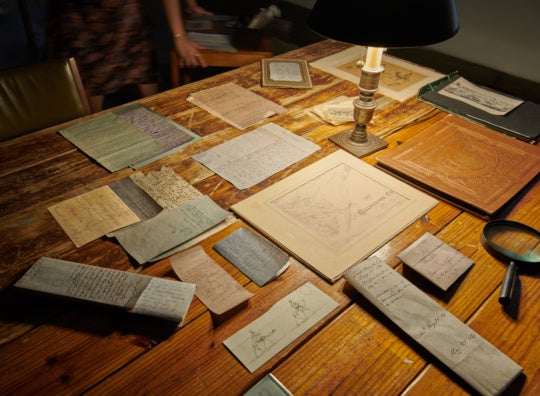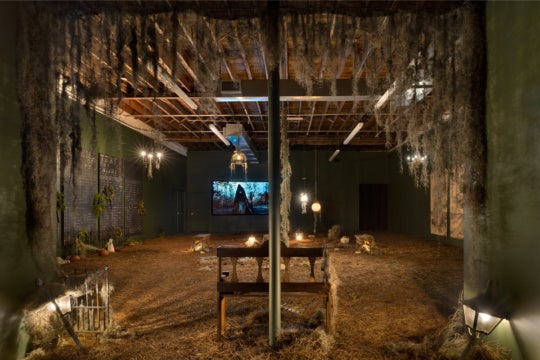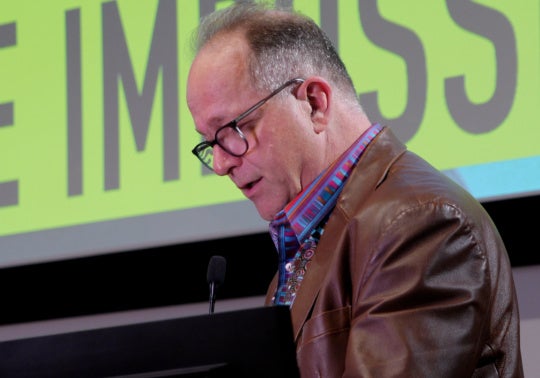
Black Lives Matter. This is the mantra, the hashtag that has flooded media, social and otherwise, in the months following the deaths of Michael Brown in Ferguson, Missouri, and Eric Garner in Staten Island. This declaration is a reaction to the excessive force used on black bodies in reaction to petty crimes. It is an assertion addressing the undercurrent of racial tension that persists decades after desegregation, and that is bubbling to the surface again.
The exhibition “Gordon Parks: Segregation Story,” at the High Museum of Art through June 7, 2015, was birthed from the black photographer’s photo essay for Life magazine in 1956 titled The Restraints: Open and Hidden. The 26 color photographs in that series focused on the related Thornton, Causey, and Tanner families who lived near Mobile and Shady Grove, Alabama. The images illustrate the lives of black families living within the confines of Jim Crow laws in the South. Unseen photos recently unearthed by the Gordon Parks Foundation have been combined with the previously published work to create an exhibition of more than 40 images; 12 works from this show will be added to the High’s photography collection of images documenting the civil rights movement.
News outlets then and now trend on the demonstrations, boycotts, and brutality of such racial turmoil, focusing on the tension between whites and blacks. The images on view at the High focus on the more benign, subtle subjugation. They capture the nuanced ways these families tended to personal matters: ordering sweet treats, picking a dress, attending church, rearing children of their own and of their white counterparts. Also, these images are in color, taking away the visual nostalgia of black-and-white film that might make these acts seem distant in time.

In one photo, Mr. and Mrs. Thornton sit erect on their living room couch, facing the camera as though their picture was being taken for a family keepsake. In another image, a well-dressed woman and young girl stand below a “colored entrance” sign outside a theater. There are other photos in which segregation is illustrated more graphically. In one, a group of young, black children hug the fence surrounding a carnival that is presumably for whites only. In another photo, a black family orders from the colored window on the side of a restaurant. Many images were taken inside of the families’ shotgun homes, a metaphor for the stretched and diminishing resources of the families and the community. These photos are peppered through the exhibit and illustrate the climate in which the photos were taken.
Some photographs are less bleak. In one image, black women and young girls stand outside in the Alabama heat in sophisticated dresses and pearls. In another, a white boy stands behind a barbed wire fence as two black boys next to him playfully wield guns. Many of these photographs would suggest nothing more than an illustration of a simple life in bucolic Alabama. But withholding the historical significance of these images—published at the beginning of the struggle for equality, the dismantling of Jim Crow laws and the genesis of the Civil Rights Act—would not due the exhibition justice.

Parks’s interest in portraiture may have been informed by his work as a fashion photographer at Vogue in the 1940s. Maybe these intimate images were even a way for Parks to empathetically handle a reality with which he was too familiar. Coming from humble beginnings in the Midwest and later documenting the inequalities of Chicago’s South Side, he understood the vassalage of poverty and segregation. Parks once said: “I picked up a camera because it was my choice of weapons against what I hated most about the universe: racism, intolerance, poverty.” He later went on to cofound Essence Magazine, make the notable films The Learning Tree, based on his autobiography of the same name, and the iconic Shaft, as well as receive numerous honors and awards.
In 1968, Parks penned and photographed an article for Life about the Harlem riots and uprising titled “The Cycle of Despair.” He wrote: “For I am you, staring back from a mirror of poverty and despair, of revolt and freedom. Look at me and know that to destroy me is to destroy yourself … There is something about both of us that goes deeper than blood or black and white. It is our common search for a better life, a better world. I march now over the same ground you once marched. I fight for the same things you still fight for. My children’s needs are the same as your children’s. I too am America. America is me. It gave me the only life I know-so I must share in its survival.”

I believe that Parks would agree that black lives matter, but that he would also advocate that all lives should matter. The images in “Segregation Story” do not portray a polarized racial climate in America. They tell a more compassionate story of struggle and survival, illustrating the oppressive restrictions placed on a segment of society and the way that those measures stunted progress but not spirits. Parks’s images encourage viewers to see his subjects as protagonists in their own lives instead of victims of societal constraints.
It would be a mistake to see this exhibition and surmise that this is merely a documentation of the America of yore. Given that the little black boy wielding the gun in one of the photos easily could have been 12-year-old Tamir Rice, who was shot to death by a Cleveland, Ohio, police officer on November 22, 2014, the color photographs serve as an unnervingly current relic. Earlier this month, in another disquieting intersection of art and social justice, hundreds of protestors against police brutality shut down I-95 , during Miami Art Week with a four-and-a-half-minute “die-in” (the time was derived from the number of hours Brown’s body lay in the street after he was shot in Ferguson), disrupting traffic to fairs like Art Basel.
Jennifer Jefferson is a journalist living in Atlanta.





